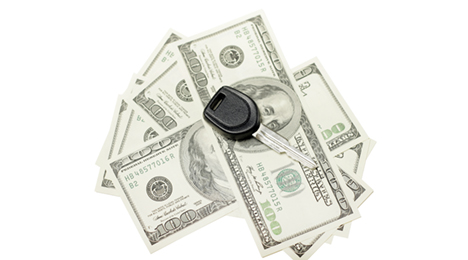S&P Global’s 5-point ABS projections for 2017

Before S&P Global Ratings credit analyst Amy Martin could even get to her slides containing projections for the auto ABS market, an observer who joined the firm’s webinar on Thursday asked which subprime ABS issuers are most vulnerable to negative results this year.
When assessing the market in general, Martin first reiterated that deep subprime has become a larger share of subprime issuance, and it has been impacting S&P Global’s auto loan static impact index.
“It’s very important to understand the wide breadth of securitizers in this area,” Martin said.
Later she added when replying directly to the question, “I would instead kind of tweak it a bit and instead say the subprime classes that are most at risk are the non-investment grade classes given their lower levels of credit enhancement. At the AAA level, the subprime issuers can cover break-even cumulative defaults that range between 60 and 95 percent.”
Here are the five other points Martin shared about S&P Global’s expectations for the year:
• Given its forecast for flat U.S. auto sales of 17.5 million units, the agency is expecting auto loan ABS volume to range between last year's level of $66.5 billion and $70 billion, representing 5-percent growth.
• Subprime auto loan issuance, which totaled $23.1 billion last year and represented 35 percent of dollar issuance and 51 percent of the number of retail auto loan ABS, is unlikely to grow, according to analysts
• With prime autos, analysts indicated losses are beginning to rise with the 2015 securitizations due to the normalization of lending standards, slightly weaker mix of securitizers, and lower recovery rates due to high off-lease volumes.
“We expect performance to soften further due to low recovery rates and manufacturers and lenders becoming more aggressive (by lengthening loan terms) in light of flattening vehicle demand,” Martin said.
• With subprime autos, S&P Global explained again that given the wide breadth of subprime auto finance companies, performance will remain issuer-specific. The firm said cumulative net losses for the 2015 vintage, sitting at 4.7 percent through month 12, are 19 percent higher than the 2014 vintage and are at their highest level since 2008.
“However, after excluding three large high-loss issuers, modified subprime cumulative net losses are in line with 2012's performance,” Martin said.
• S&P Global added that credit enhancement levels have increased for several issuers reporting higher losses.
“Further, auto ABS deals benefit from rapid deleveraging, which builds credit enhancement for the senior classes as subordination grows relative to the declining pool balance. As a result, we expect ratings to remain stable this year, especially for investment grade classes,” Martin said.

 View The Latest Edition
View The Latest Edition

